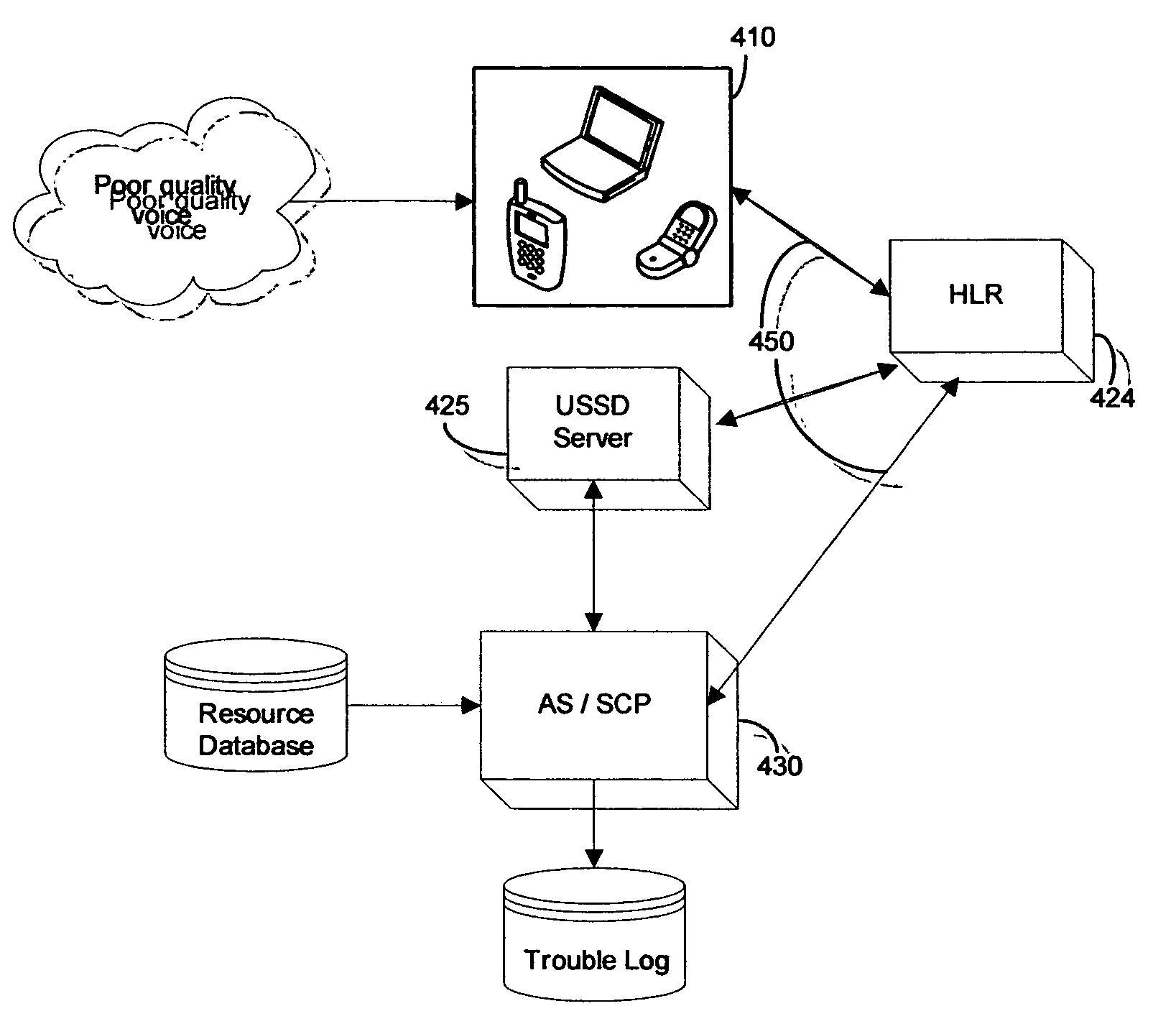Automated tagging of targeted media resources
- Summary
- Abstract
- Description
- Claims
- Application Information
AI Technical Summary
Benefits of technology
Problems solved by technology
Method used
Image
Examples
Embodiment Construction
[0022]The present invention addresses the need to increase awareness of faulty media resources by allowing the recipient of the resource to “tag” the media instantly. As shown in the system architecture of FIG. 1 and flowchart of FIG. 2, once the Client 110 recognizes a bad resource 100 from the cellular network, the Client 110 may initiate the tagging process. Depending on the signaling and transport protocol being used, the tag makes its way 120 through the cellular network before reaching the respective Application Server (AS) 130 that controls the resource. The AS 130 may then retrieve any associated information about the resource from a resource database 135, possibly invoking the Media Resource Function (MRF) in the process. The AS 130 will then compile a tag consisting of the initial tag and the additional information, and may store the tag in a trouble log 140 for further analysis.
[0023]The client may be any cellular telephone, wireline telephone, PDA, smartphone, PC-Card, o...
PUM
 Login to View More
Login to View More Abstract
Description
Claims
Application Information
 Login to View More
Login to View More - R&D
- Intellectual Property
- Life Sciences
- Materials
- Tech Scout
- Unparalleled Data Quality
- Higher Quality Content
- 60% Fewer Hallucinations
Browse by: Latest US Patents, China's latest patents, Technical Efficacy Thesaurus, Application Domain, Technology Topic, Popular Technical Reports.
© 2025 PatSnap. All rights reserved.Legal|Privacy policy|Modern Slavery Act Transparency Statement|Sitemap|About US| Contact US: help@patsnap.com



